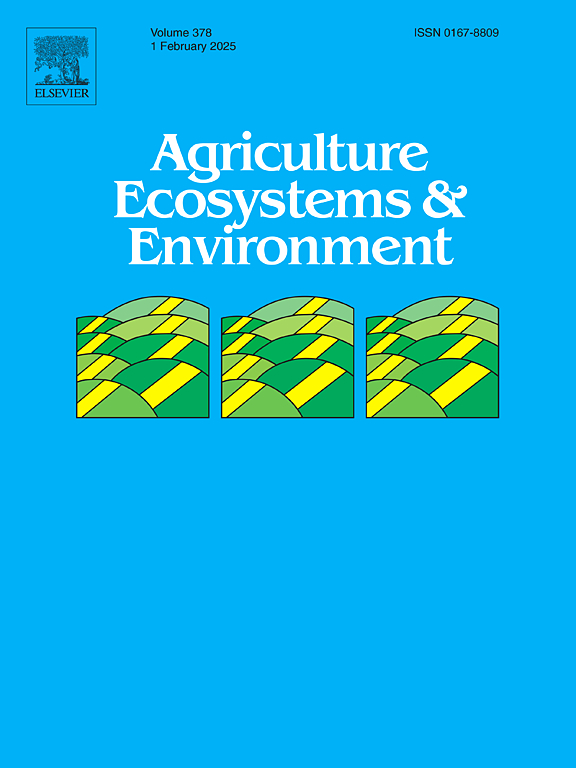Long term intercropping promotes improvement of soil quality and alleviates faba bean wilt disease
IF 6
1区 农林科学
Q1 AGRICULTURE, MULTIDISCIPLINARY
引用次数: 0
Abstract
Background
Intercropping is vital for enhancing soil quality improvement and improving ecological services.
Objective
This study integrated the analysis of rhizosphere metabolites and microbial communities to elucidate the mechanism by which the long-term intercropping could regulate the soil rhizosphere microecology and promote the faba bean growth.
Method
Two planting modes, faba bean single cropping and faba bean-wheat intercropping, along with the planting durations of 1 and 9 years, were established to investigate the wilt disease occurrence. The growth indicators, the soil physical and chemical properties, the rhizosphere microbial communities, and the changes in rhizosphere metabolites of faba bean were measured.
Results
Continuous cropping can lead to poor soil conditions and high incidence of faba bean disease, while intercropping can alleviate the occurrence of diseases. Compared with monoculture for 1 year, monoculture for 9 year can promote the growth of faba bean by 12.89–29.19 %, reduce the incidence rate of fusarium wilt by 41.38 %, increase the proportion of large aggregates with R> 0.25 mm by 18.87 % by reducing the soil bulk density by 6.67 %, average weight diameter 23.16 %, geometric mean diameter 26.51 %, maintaining soil pH stability and increasing soil organic matter by 30.74 % can improve soil structure, and the disease control effect is more significant. It is also possible to reduce the relative abundance of Fusarium by 8.93 % by improving the soil microbial community structure. In addition, metabolomics analysis also showed that long-term intercropping promotes the secretion of flavonoids and terpenoids in the rhizosphere soil of faba bean, enhancing their resistance. Through correlation analysis, it was found that soil microbial activity is closely related to key metabolites in crop rhizosphere. The secretion and synthesis of flavonoids and terpenes can reduce the abundance of faba bean pathogens and alleviate their disease occurrence.
Conclusion
The faba bean-wheat long-term intercropping improved the soil physical and chemical properties, reconstructed the microbial community structure, and reduced the pathogenic bacteria abundance through rhizosphere metabolites, thereby maintaining soil quality improvement and promoting healthy faba bean growth.
求助全文
约1分钟内获得全文
求助全文
来源期刊

Agriculture, Ecosystems & Environment
环境科学-环境科学
CiteScore
11.70
自引率
9.10%
发文量
392
审稿时长
26 days
期刊介绍:
Agriculture, Ecosystems and Environment publishes scientific articles dealing with the interface between agroecosystems and the natural environment, specifically how agriculture influences the environment and how changes in that environment impact agroecosystems. Preference is given to papers from experimental and observational research at the field, system or landscape level, from studies that enhance our understanding of processes using data-based biophysical modelling, and papers that bridge scientific disciplines and integrate knowledge. All papers should be placed in an international or wide comparative context.
 求助内容:
求助内容: 应助结果提醒方式:
应助结果提醒方式:


